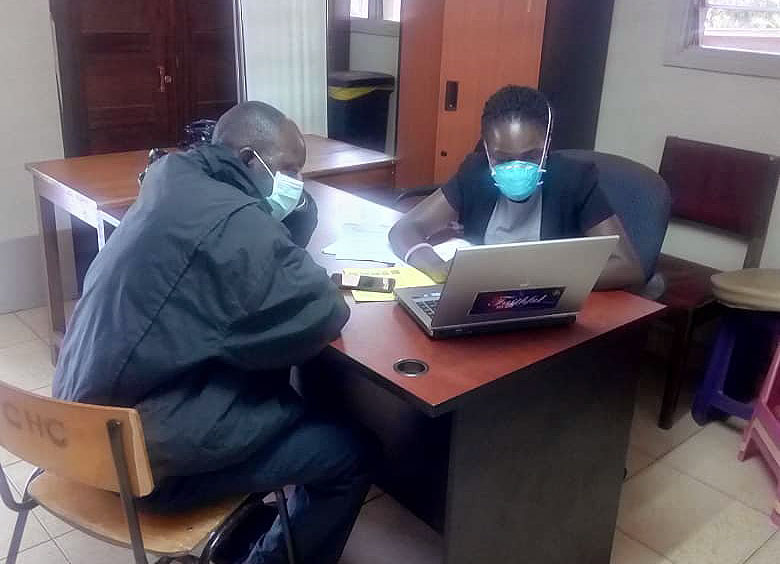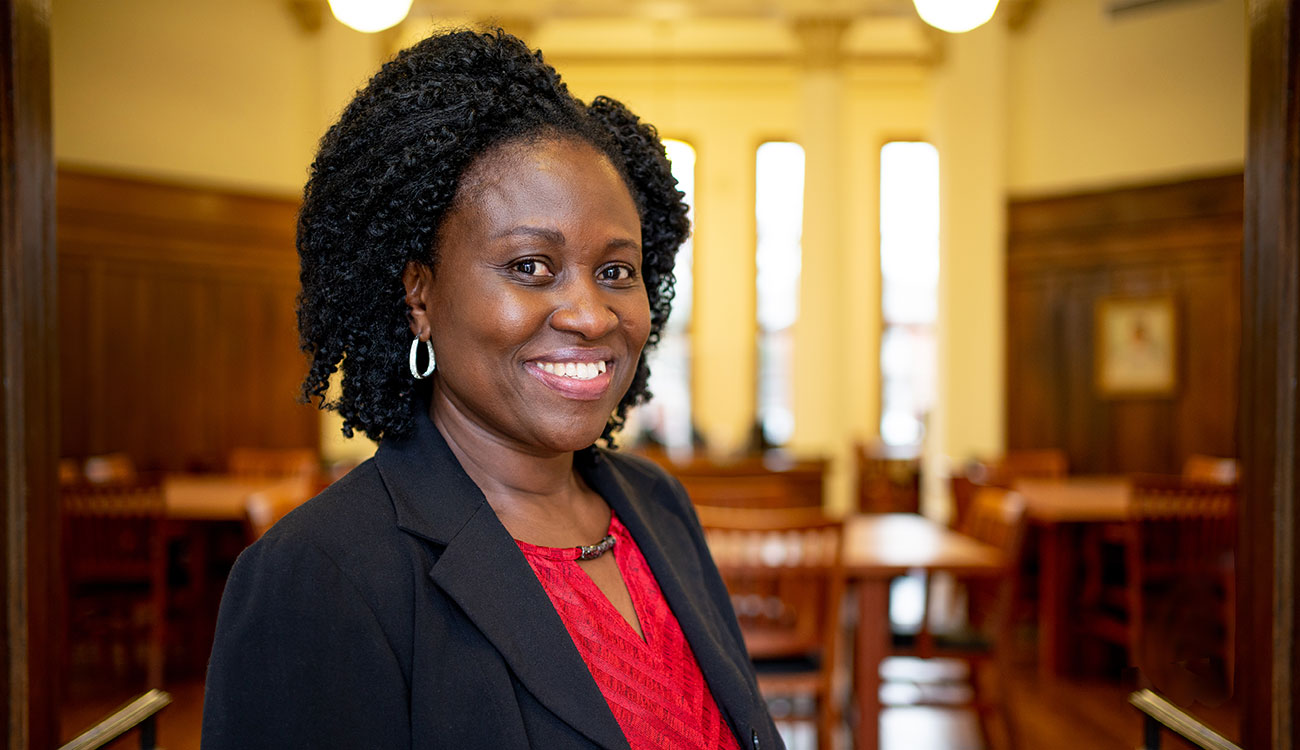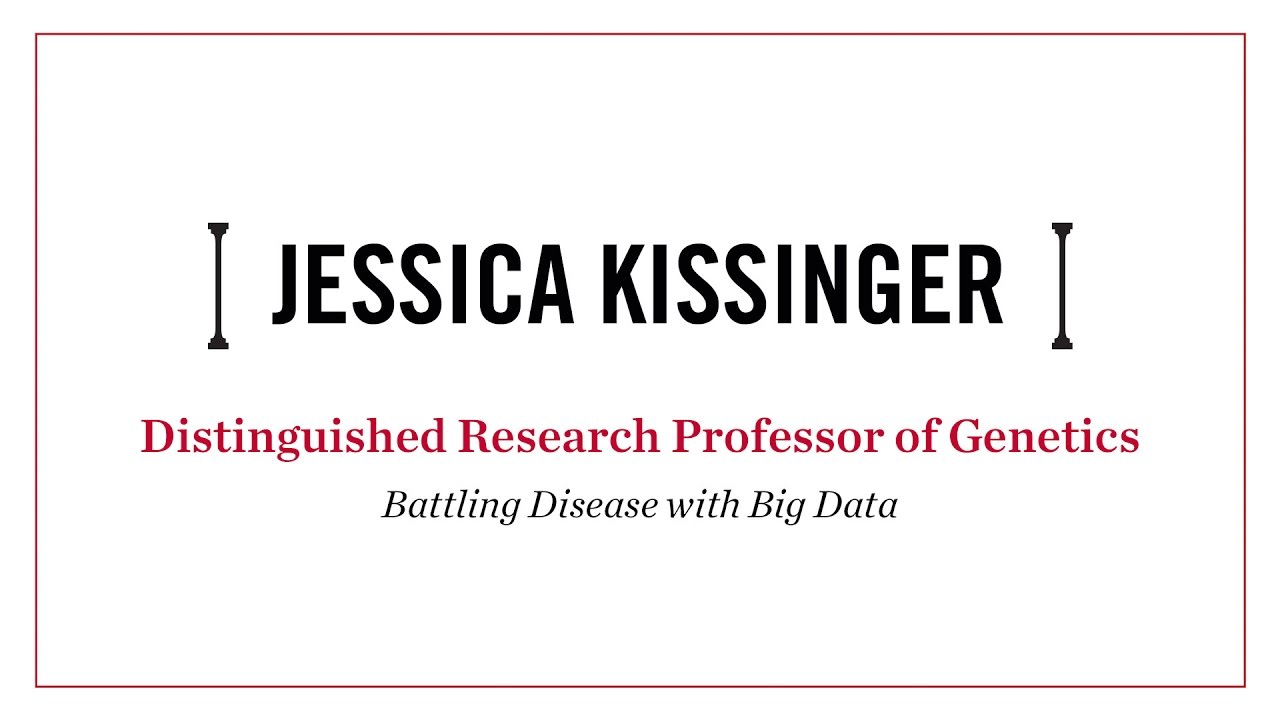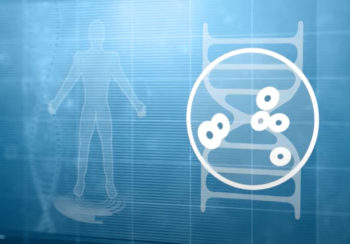Tuberculosis is rampant in Uganda, where nearly 80,000 people develop the disease every year. While practicing there as the attending physician in charge of the public hospital’s TB clinic, Dr. Juliet Sekandi, assistant professor in the UGA College of Public Health, noticed that when people with TB came to her clinic, they often had been suffering for months from the painful breathing, extreme and persistent coughing, fatigue, and fever. Moreover, after the patients went home with their treatment, they would soon return with a household member (or two) who now also had TB.
TB is a highly contagious disease that spreads when the bacteria are ejected from a person’s lungs when they cough or even just speak. So, in a household of four or more people, it was unlikely that it would infect only one person. What’s more, the longer someone remains undetected, the further they spread the disease. What was it, Sekandi wondered, that was keeping people from seeking treatment, helping TB spread like wildfire? That question led her on an ongoing 15-year quest to understand the factors underlying people’s resistance to seeking help, and has spurred a solution using cell phones and artificial intelligence.
At the time, she was trained as an M.D., a field that focuses on finding and treating patients. But that approach wasn’t solving the larger issue of TB spreading throughout the community. For that, she knew she would need to use a public health perspective, which could both seek to prevent the disease from spreading and get care to people who didn’t have good access to it.
Using an exercise called active case finding, she went door to door in one of the capital city of Kampala’s poorest slums, asking people about their cough and to give her samples of their spit. She found that, of those who’d had a chronic cough for at least two weeks, 20% tested positive for TB. She also tested people for HIV and discovered that 30% of those found to have TB also had HIV—most of them unaware they were positive.
“Now, we have very effective medicine to treat TB,” said Sekandi. “So, if one in five is not showing up for treatment, it was clear we needed to find a way to improve our case detection.”
TB causes disease by attacking the body’s CD4 immune cells. As it turns out, so does the human-immunodeficiency virus (HIV), which can lead to AIDS. People with HIV/AIDS are more susceptible to catching TB because their CD4 cells are already depleted.
What was going on that led people to avoid medical treatment for two diseases that, either alone or together, can be fatal when left untreated, yet can be well-controlled if they are medicated properly? The answer was twofold: avoiding the health clinic and not finishing their medication.

Social engineering
Health care runs in Sekandi’s blood. With a mother who served as both a nurse and an educator, Sekandi didn’t see herself in any other place except health care.
“She loved what she did and taught me a lot about the health field,” said Sekandi. “So, I was convinced that taking care of people’s health was the best thing one could ever do.”
Longing to prevent health problems at the community level, Sekandi moved to Georgia and earned her doctor of public health degree from UGA in 2013, becoming an assistant professor in 2016. But she conducts much of her research in her native country.
Uganda’s health care system is free to all, paid for by the government. But there’s a catch: You can’t make an appointment. Instead, you have to show up at either the clinic or the hospital, where it’s first-come, first-served.
“If you’re really sick, you may not have the stamina to wait in line from several hours to all day, so you stay home,” explained Sekandi. “And if you feel sick but not too worn out, you may decide to avoid the wait and head to the pharmacy instead.”
In some countries, like Uganda, most common antibiotics don’t require a prescription. Instead, people can go straight to the pharmacist to get diagnosed and receive medication.
But because the TB treatment is prescribed only by a doctor and takes up to six months, most patients never complete their full course of medication, typically interrupting on and off after only two months. “After you start to feel better, you start believing you’re cured, so you think, ‘I don’t need to go back to the TB clinic for refills,’” said Sekandi.
And there’s where the problem lies, because when the infection isn’t eradicated, the bacteria mutate to become resistant to the drugs. This can also happen (and does) when people forget to take their pills consistently.
“So, you get sick again, but this time the medicine doesn’t work as well as it did before. Now you’ve got medication-resistant TB, and it’s more likely you’ll die especially if you also have HIV disease, and your family won’t even understand why,” said Sekandi.
“How do we fix this?” she wondered. How can we help more people adhere to the full treatment they need, so they don’t die and/or unknowingly spread a fatal yet eminently treatable disease?
The answer in our pockets
“One traditional way is to have nurses watch the patients take their medicine,” Sekandi said. “But no one has enough nurses to watch everyone. And if you rely on self-reports, patients will often just tell you what you want to hear, not wanting to disappoint you or be embarrassed for forgetting, not realizing the danger they’re putting themselves in.”
Sekandi’s solution? Enlist rapidly growing mobile phone technology.
“I thought, if we can use the smartphone they’re already holding in their hand to record videos of them taking their medicine, then we might be able to monitor them more closely,” she said.
Researchers at the University of California San Diego had already developed an app for this. So Sekandi and her team tested her idea through a pilot study with 50 patients in Uganda.
One of the big differences between running a trial like this in a place like Uganda is the cost of internet service. Internet networks aren’t as ubiquitous there as in the United States, she said. So, the price for access—about $4 per month in a pay-as-you-go arrangement—is much more significant to the average person yet extremely cheap for the research team. As an incentive, investigators paid for the study participants’ data. But to guard against people using all of their data for other things before they reported their results, the team only paid for service one week at a time.
Now Sekandi is in the middle of a larger study to see if this method, dubbed DOT Selfie, maps to the greater population. However, with each patient having to take 168 doses for their complete treatment, the increased size of the study population could lead to the same problem that’s been found with the shortage of nurse monitors: There are just too many videos for too few nurses to watch. So, Sekandi has teamed with Sheng Li, assistant professor of computer science in the Franklin College of Arts and Sciences, and they are developing an artificial intelligence tool, AI.Medwise, to monitor the videos. The tool will have the facial and pill recognition capabilities to confirm that patients swallowed their medications. This approach will make it possible to scale the use of the DOT Selfie method. They plan on presenting research on the AI once this current study is complete.
If all goes well, this technique could be used for a host of other diseases, including chronic ones that require lifelong treatment, said Sekandi. “We have already started supporting medication adherence for patients taking both TB and HIV treatment.”






